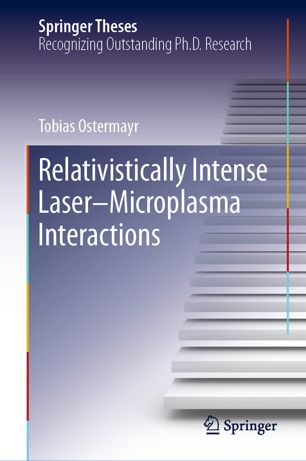

Most ebook files are in PDF format, so you can easily read them using various software such as Foxit Reader or directly on the Google Chrome browser.
Some ebook files are released by publishers in other formats such as .awz, .mobi, .epub, .fb2, etc. You may need to install specific software to read these formats on mobile/PC, such as Calibre.
Please read the tutorial at this link: https://ebookbell.com/faq
We offer FREE conversion to the popular formats you request; however, this may take some time. Therefore, right after payment, please email us, and we will try to provide the service as quickly as possible.
For some exceptional file formats or broken links (if any), please refrain from opening any disputes. Instead, email us first, and we will try to assist within a maximum of 6 hours.
EbookBell Team

4.0
6 reviewsThis dissertation covers several important aspects of relativistically intense laser–microplasma interactions and some potential applications. A Paul-trap based target system was developed to provide fully isolated, well defined and well positioned micro-sphere-targets for experiments with focused peta-watt laser pulses. The laser interaction turned such targets into microplasmas, emitting proton beams with kinetic energies exceeding 10 MeV. The proton beam kinetic energy spectrum and spatial distribution were tuned by variation of the acceleration mechanism, reaching from broadly distributed spectra in relatively cold plasma expansions to spectra with relative energy spread as small as 20% in spherical multi-species Coulomb explosions and in directed acceleration processes. Numerical simulations and analytical calculations support these experimental findings and show how microplasmas may be used to engineer laser-driven proton sources. In a second effort, tungsten micro-needle-targets were used at a peta-watt laser to produce few-keV x-rays and 10-MeV-level proton beams simultaneously, both measured to have only few-µm effective source-size. This source was used to demonstrate single-shot simultaneous radiographic imaging with x-rays and protons of biological and technological samples.
Finally, the dissertation discusses future perspectives and directions for laser–microplasma interactions including non-spherical target shapes, as well as thoughts on experimental techniques and advanced quantitative image evaluation for the laser driven radiography.